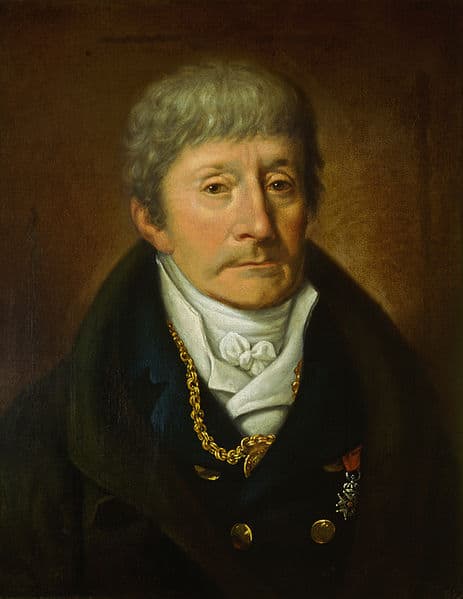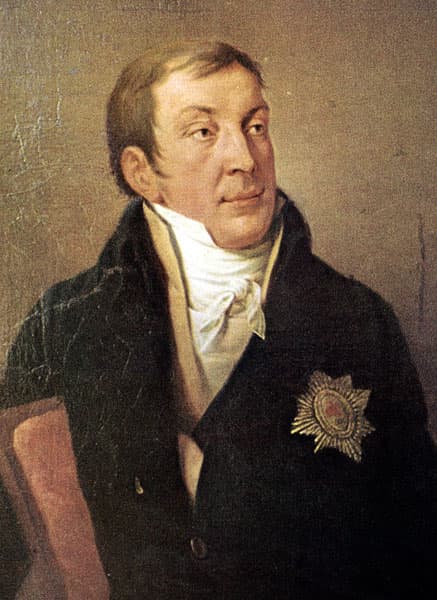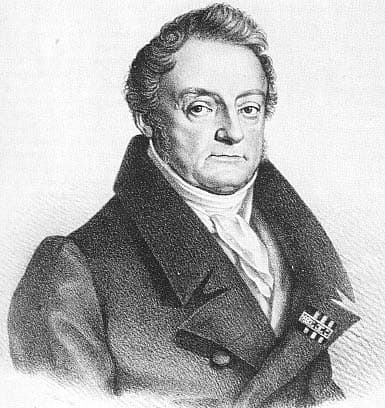Beethoven Online CoursePart 2 – Heiligenstadt
by Jeffrey Dee Olpin

Ludwig van Beethoven
Beethoven permanently established himself in Vienna in late 1792, at the age of 22. Shortly after his arrival, Beethoven learned his father had died in Bonn. Undoubtedly, this news generated mixed emotions. Although Johann van Beethoven had been relatively forgotten in Bonn at the time of his death, Beethoven’s Bonn patron, Archduke Maximilian Franz marked the occasion by noting that “the revenues of the liquor excise have suffered a loss.” Beethoven opted to not return for his father’s funeral.
Beethoven permanently established himself in Vienna in late 1792, at the age of 22. Shortly after his arrival, Beethoven learned his father had died in Bonn. Undoubtedly, this news generated mixed emotions. Although Johann van Beethoven had been relatively forgotten in Bonn at the time of his death, Beethoven’s Bonn patron, Archduke Maximilian Franz marked the occasion by noting that “the revenues of the liquor excise have suffered a loss.” Beethoven opted to not return for his father’s funeral.
Beethoven spent a great deal of time during his early years in Vienna focusing on his compositional studies. Vienna was the center of the musical world at that time, which may have been partly due to its relatively central geography. Vienna is physically located between Italy and Germany, which made it an ideal crossroad for a blending of Italian lyricism and German counterpoint. Vienna in the late 18th and early 19th century was an incredibly fertile environment, full of rich opportunities for musicians and composers. Members of the ruling Hapsburg monarchy were ardent patrons of the arts. Vienna contained a multitude of wealthy aristocrats that were willing and able to lend assistance to promising new talent such as Beethoven. Unquestionably, he was delighted to encounter such a large number of professional, semi-professional, and amateur musicians at his disposal.

Schönbrunn palace in Vienna, summer residence of the Hapsburg monarchy
Scholars generally divide Beethoven’s career into three creative periods. The first major period (1792-1802) began upon his arrival in Vienna, and lasted until the onset of deafness. The second period, otherwise known as the “Heroic” period (1802-1814) is by far his most productive phase. The majority of his symphonies were composed during this period. Works from the third and final period (1814-1827) are sparse, but more musically dense and complex than those of earlier periods.

Ludwig van Beethoven, 1803
Beethoven was absorbed in analyzing the works of the recently deceased Mozart during his first creative period. He sought to master the art of counterpoint under Haydn’s direction. He also received occasional instruction from Antonio Salieri, the celebrated Italian composer and conductor unfairly vilified as Mozart’s bitter rival in the dramatic and highly fictionalized Amadeus. There was evidently little animosity between Mozart and Salieri, given the fact the latter served as pallbearer at Mozart’s pauper burial. In truth, Salieri was not threatened by musical talent, and taught Beethoven the fundamentals of Italian vocal compositional style.

Antonio Salieri (1750-1825)
Beethoven received financial assistance from the Elector of Bonn, Archduke Maximilian Francis of Austria, during his early years in Vienna. The Elector financed Beethoven’s sabbatical with the understanding he would return home after two years of study in Vienna.

Maximilian Franz visits with his sister Marie Antoinette and King Louis XVI of France
However, Beethoven had no intention of returning to Bonn after his initial years in Vienna. Fortunately, he came to the attention of several wealthy Viennese patrons who recognized his blossoming talents and abilities. Within a year of Beethoven’s arrival in Vienna, he established himself as a gifted piano virtuoso. His ability to freely improvise elaborate pieces in the salons of the Viennese nobility was particularly celebrated.
Beethoven’s arrival into the early 19th century Viennese musical scene was fortuitous for a number of reasons. Beethoven enjoyed unprecedented freedoms as an artist and musician in ways his predecessors could not have fathomed. Previous composers were either shackled to a liturgical position with an accompanying meager salary, or functioned as indentured servants to a wealthy aristocrat. Beethoven was considered the first major composer to break away from this feudal system. He could freely accept commissions from wealthy patrons without the burdensome obligations his predecessors endured. For example, Haydn was required to serve as a court valet and stable hand in the Esterhazy Court when not performing his musical duties.
Additionally, Beethoven shrewdly negotiated substantial royalties from his publishers at Breitkopf and Härtel. He also freely organized his own concerts, for which he would receive the majority of the proceeds. Due to his notoriety, he could charge double or triple for tickets to his concerts compared with those given by his contemporaries. Nevertheless, Beethoven was still somewhat financially vulnerable, particularly during his early years in Vienna as he labored to establish his reputation as a composer. He relied on various patrons during those early years.

Bernhard Christoph Breitkopf, founder of Breitkopf und Härtel in Leipzig, 1719
A notable among Beethoven’s early patrons is Prince Karl Lichnowsky, a Chamberlain at the Imperial Hapsburg court. Lichnowsky was also a patron of Mozart, though their relationship soured after Mozart reneged repayment on a fairly large loan. Lichnowsky successfully sued Mozart in 1791 by obtaining an imperial order to garnish half of Mozart’s wages until the debt was repaid. Mozart died before the order could take effect.

Karl Alois, Prince Lichnowsky
Lichnowsky was one of Beethoven’s most ardent supporters. Beethoven referred to him as “one of my most loyal friends and promoters of my art” in a letter dated 1805. Beethoven was actually invited to live with the Lichnowskys shortly after his arrival in Vienna, and remained with them as an adopted (and highly fortunate) member of the family for several years. Lichnowsky’s wife, Princess Christiane, was well known for her piano skills among Viennese nobility. Acquaintances described her as a “motherly” figure to Beethoven, despite the fact she was just five years his senior. Beethoven dedicated one of his most well-known piano sonatas to Lichnowsky in 1798, the Piano sonata in C minor, Opus 13 “Pathetique”. The “Pathetique” sonata was considered a major early triumph, which one biographer describes as “surpassing any of his previous compositions, in strength of character, depth of emotion, level of originality, and ingenuity of motivic and tonal manipulation.”
Lichnowsky gave Beethoven an annual stipend in 1800 until the latter could be self-sufficient. Unfortunately, Beethoven and Lichnowsky had a bitter falling out in 1806. The event is a typical example of Beethoven’s passionate, often volatile temper leading to a detrimental, self-destructive outcome. Beethoven was staying at Lichnowsky’s country estate when he refused the Prince’s request to perform for visiting French officers. The two men quarreled passionately over the incident, and Beethoven smashed a bust of the prince after storming back to Vienna.
The Viennese Count Ferdinand von Waldstein was yet another significant early Beethoven supporter. Waldstein was admitted to the court of the Prince Elector of Cologne in 1788, when Beethoven was 18 and still in Bonn. Although Waldstein was a lifelong friend and supporter to Beethoven, his financial assistance was interrupted at some point during Beethoven’s career.

Count Ferdinand Ernst Gabriel von Waldstein
Waldstein spent a considerable portion of his fortune attempting to raise an army to defeat Napolean in the late 1790’s, and subsequently lost the remainder of his fortune in Vienna after a series of unfortunate financial transactions. He died a pauper in Vienna in 1823. Beethoven dedicated one of his most celebrated and significant piano sonatas to him, otherwise known as the “Waldstein” sonata, opus 53 in C major.
By 1800, Beethoven had firmly established himself as a gifted musician who composed chiefly for solo piano. Around this time, he embarked on more ambitious genres such as the symphony and string quartet. Scholars feel he was beginning to reach musical maturity by this time. His First and Second Symphonies premiered in 1800 and 1802 respectively. Beethoven hired the Burgtheater on April 2, 1800, for the premiere of his First Symphony in addition to several smaller works.
He also performed one of his early piano concerti (historians are uncertain as to whether the First or Second Piano Concerto was performed). Other works by Haydn and Mozart were also featured.

Burgtheater in Vienna
Concerts at that time were long affairs, often lasting several hours. The concert at the Burgtheater was a big success. A musical journal of the day, the Allgemeine musikalische Zeitung described the concert as “the most interesting concert in a long time.”
Beethoven began to suffer from tinnitus or a “ringing” in his ears as early as 1796. The auditory disturbances were intermittent at this time. When the condition flared, it became difficult for Beethoven to hear music. His ailment also took a toll on his performing ability. His piano skills began to rapidly deteriorate as the tinnitus progressed. Beethoven’s behavior became increasingly erratic; he became short-tempered with friends and colleagues. He began avoiding conversation, and became progressively reclusive.
In the late 1790s, during the early onset of this malady, Beethoven attempted to deny his deafness, both to himself and to his friends. On the advice of his doctor, he moved to the small town of Heiligenstadt, a fashionable resort town near Vienna, for a prolonged hiatus from April until October of 1802.

Heiligenstadt
Ferdinand Ries, a pupil and friend of Beethoven, recalls visiting Beethoven in Heiligenstadt, and described both his apparent deafness and his moods:
“I called his attention to a shepherd who was piping very agreeably in the woods on a flute made of a twig of elder. For half an hour Beethoven could hear nothing, and though I assured him that it was the same with me (which was not the case), he became extremely quiet and morose. When occasionally he seemed to be merry, it was generally to the extreme of boisterousness; but this happened seldom.”
It was in Heiligenstadt that Beethoven poured out his heart in the form of a letter addressed to his brothers Carl and Johann dated October 6, 1802. The letter was never sent to his brothers, but was discovered by his biographer Anton Schindler in March, 1827, shortly following his death. The letter has since become known as the “Heiligenstadt Testament,” but was likely shown to no one during Beethoven’s lifetime. Since the letter’s discovery in 1827, it has become one of the most significant documents to be associated with Beethoven. It has provided scholars and historians with vivid insight into the inner recesses of Beethoven’s mind during a time of intense personal crisis.

Beethovenhaus in Heiligenstadt
Throughout the document, Beethoven, overcome with anguish over his progressive deafness, attempted to explain the source of his “malevolent and stubborn” behavior to his brothers. He discussed the intense anguish he was suffering, as well as the cruel irony that he felt.

Fascimile of the Heiligenstadt Testament
Although Beethoven’s anguish over his condition was clearly genuine, scholars and historians have described the overall tone of the document as somewhat melodramatic and self-indulgent. In particular, Beethoven discusses suicidal ideations in the document, but claims he would ultimately not end his life because of his higher calling:
“I would have ended my life-it was only my art that held me back..”
“Thanks to virtue and to my art, I did not end my life by suicide…”
Beethoven, in a particularly pictorial passage near the conclusion of the document, likens his personal tragedy to the impending change of seasons:
“As the leaves of autumn fall and are withered-so likewise has my hope been blighted. I leave here-almost as I came-even the high courage-which often inspired me in the beautiful days of summer-has disappeared.”
Following the cathartic Heiligenstadt period in his life, Beethoven would scarcely refer to his deafness over the course of the next decade, suggesting that either his deafness had abated, or that he had come to terms with his malady. Beethoven would emerge from Heiligenstadt with tremendous creative energy as he embarked on his most creative period, or “heroic” phase.
About the Author
Jeffrey Dee Olpin, M.D., is a native of Pleasant Grove, Utah. He began violin instruction at the age of six. Prior to his college studies, Jeff’s musical training consisted of personal instruction with David Dalton and Percy Kalt, both faculty members with the Department of Music at Brigham Young University. Jeff pursued a Bachelors Degree in Music Performance at Brigham Young University. Subsequently, he received a Masters Degree in Music Performance at the Yale School of Music. Although passionate about music, Jeff ultimately chose a career in medicine. He graduated from the Tulane University School of Medicine in New Orleans, Louisiana, followed by residency training in Diagnostic Radiology at Beth Israel Medical Center in New York City. He then pursued a fellowship in Abdominal Imaging at the University of California, San Francisco. Currently, Jeff is an Associate Professor of Diagnostic Radiology at the University of Utah Health Sciences Center. He resides in Bountiful, Utah, with his wife and two children.











